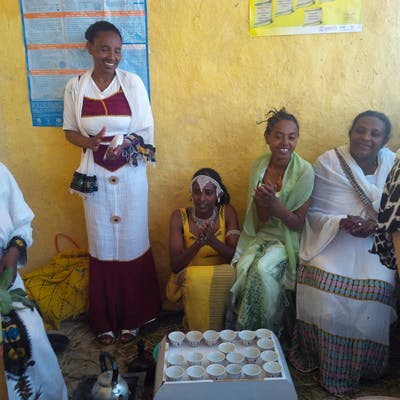The 26th of September was World Contraception Day. To draw attention to it, the United Nations released country-level data on trends in contraceptive use rates as well as in the unmet need for family planning. These data are very useful as initiatives like Family Planning 2020 gather momentum and countries get down to actually formulating policies to satisfy half or more of the current unmet need for family planning. But they are also very useful to get us to think in more detail about what it is that we wish to offer sexually active women who do not want to become pregnant, but are nevertheless not using voluntary birth control.
Obviously, it is not just one thing we need to offer them – not just one method of contraception, not the same method in different countries, not the same method to different categories of women in the same country.
But we also need to keep in mind that a single method will not even serve the needs of an individual woman once and for all. While the overarching need is for safe and effective contraception, a woman has very different contraceptive needs at different times in her life. Circumstances change, some in an expected direction, others in directions that are radically unexpected. And what might have seemed the perfect form of contraception at one point of time might become completely unsuitable at another. Family planning programs therefore need to be more mindful of the changing circumstances of the women they want to cater to. Having a cafeteria of methods available is fine on paper (and, unfortunately, it is only on paper that such a choice of methods actually exists in many parts of the developing world); in the real world it makes much more sense for women and providers to focus on a smaller sub-set of
appropriate methods tailored to a woman’s circumstances.
One way to think about this is from a life course perspective. As a young girl progresses through life and the many personal and social milestones that mark this progress, her sexual and reproductive behavior varies enormously, as does her need for effective and efficient birth control. From the program’s perspective, one way to picture this changing need is to ask what exactly her contraceptive need is for. And at the very minimum, one can think of contraception that is needed to:
a. Delay the start of childbearing;
b. Control the interval between successive births;
c. Stop childbearing altogether.
Each of these needs calls for different, even if overlapping, methods of choice. For example, young women who are or expect to be sexually active, but do not yet want a child birth, at the same time that they do eventually expect to become mothers, need contraceptive methods that are temporary or reversible. From among such methods, they may need to narrow their choices according to the particulars of their sexual lives – if they are married and regularly exposed to the possibility of a pregnancy, something like a LARC (long acting reversible contraceptives such as IUDs and implants) that do not require constant monitoring or user action might best fit the bill. In some cases, it might also be important to offer these methods because they guarantee the privacy or even secrecy that women with limited control on their reproductive lives need.
On the other hand, young childless women for whom sexual activity is episodic or sporadic or spontaneous might need to be able to delay the first pregnancy with methods that are more immediate or time bound – depending on the level of risk of pregnancy, LARCs may continue to be relevant, but for many young unmarried girls who are not in a stable relationship it may make more sense to go for a condom or diaphragm or even for emergency contraception, which, contrary to popular misperceptions, is not an abortifacient; it prevents fertilization and conception – that is why it needs to be used very soon after unprotected sex. For young women, single or married, in sexual relationships or encounters that also carry the risk of acquiring a sexually transmitted infection, perhaps dual contraception – the pill as well as the condom – might be the best form of safe contraception.
On the other hand, as time passes and life cycle stages change, these women may now seek only to delay a second or subsequent pregnancy long enough to not be able to rely on the temporary and rapidly waning contraceptive effects of regular breastfeeding; here the need is for temporary methods of birth control that are safe for a breastfeeding mother as well as, ideally, coitus-independent – that unromantic term refers to methods that do not need use or monitoring at the time of each act of sex; the young mother running a home, managing a young child, and maybe also a fledgling career is usually crying out for contraceptive technology that lets her enjoy her usually rushed sex life without having to reach out for a condom (or, more accurately, persuade her partner to reach out for one) as she keeps her ears cocked for the bawls of the baby in the next room. In other words, a 25-year old with no children (and perhaps no husband either) and a 25-year old with a young child (and perhaps a nosy mother-in-law as well) are at very different points in their life course trajectory, and family planning providers need to take these differences into account.
Finally, there are the women who absolutely do not, will not, countenance another pregnancy and birth. Whether or not these women already have children or have chosen to remain permanently childless, they now feel the need to do other things with their lives than bear and rear babies. As fertility falls, thiscategory of woman is getting younger and younger; that is, she is now has a pretty long stretch of sexually active life before her and her unmet need for contraception is ideally met by long-term methods, reversible or even irreversible, depending on the strength of her desire to completely stop childbearing. For the younger woman who says she wants no more children, a family planning provider ideally should allow for a change of heart for so many reasons – a new partner, the all too common poor-country experience of a child death, a rise in income that makes her ideal family size affordable; for these women, a sensitive provider will not strongly recommend an irreversible sterilization. But for the older woman who is convinced that she is done with childbearing, something like a laparoscopic sterilization (better still, a vasectomy for her husband) is very likely the form of contraception she will be most receptive to.
Even a crude check list that allows providers to categorize the life stage of the woman with an unmet need for family planning will greatly improve the chances that she will be offered a method that she will accept as well as continue to use (and continuation rates are as, if not more, important as acceptance rates), that the provider will not have wasted time discussing unsuitable options with her, and that there is some planning in the supply chain of various contraceptives according to the life course profile of the women in an area. All this together will also make it more likely that by 2030 we will be able to say that we have indeed effectively reached out to an additional 120 million women who want but are not practicing birth control.



 View All Blog Posts
View All Blog Posts